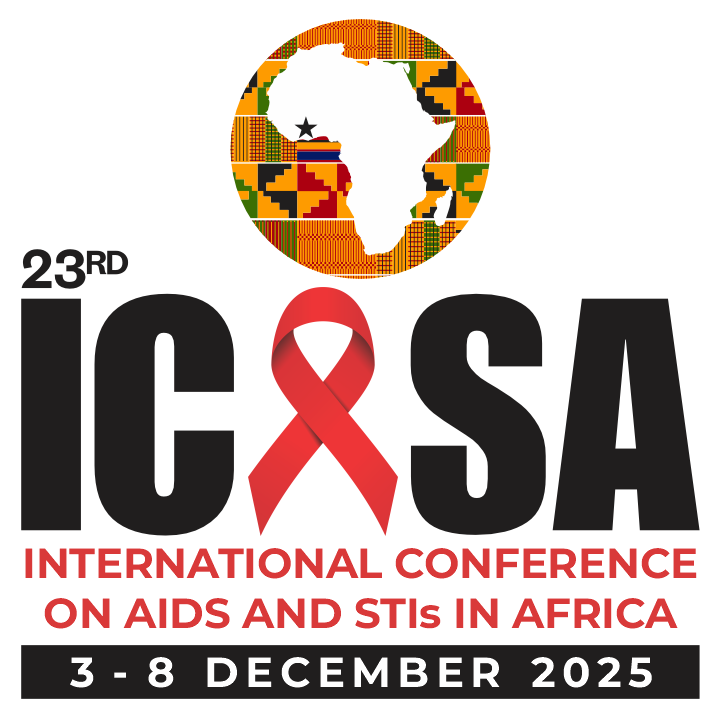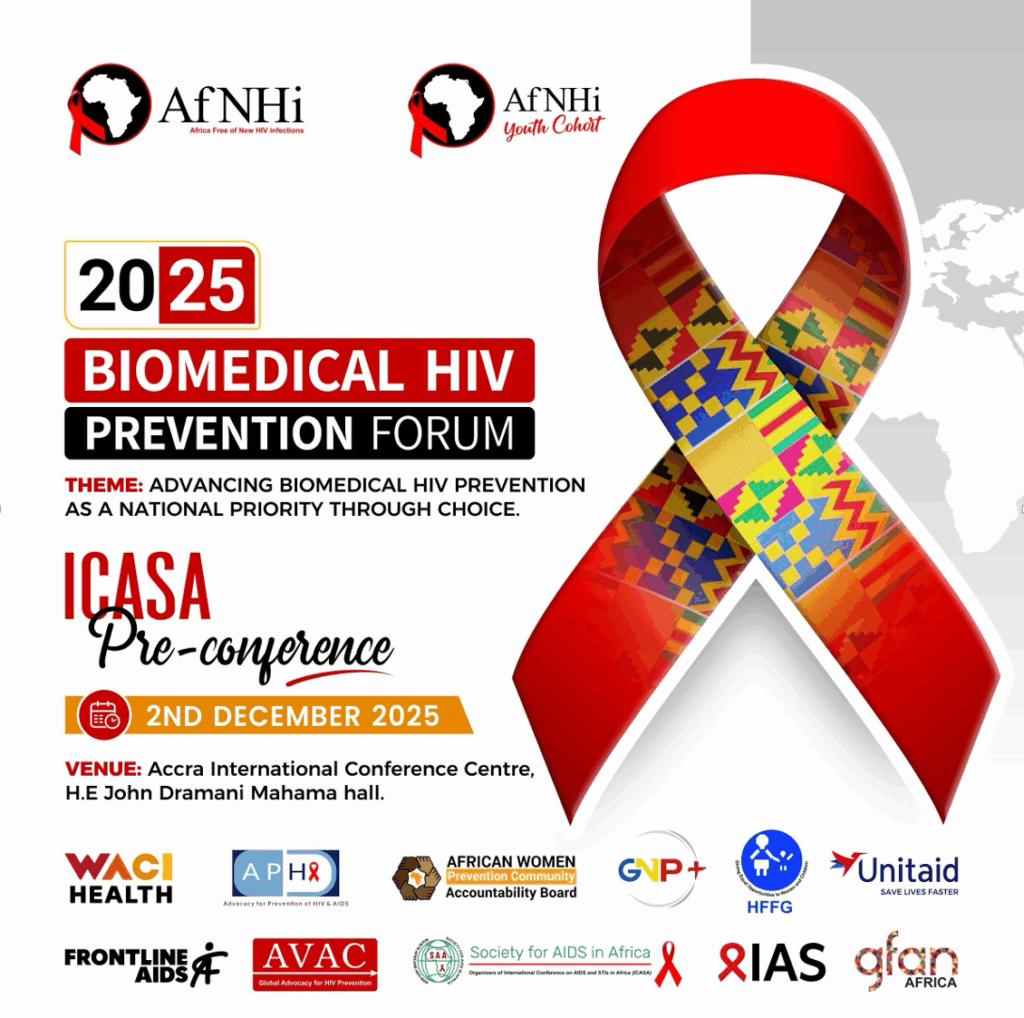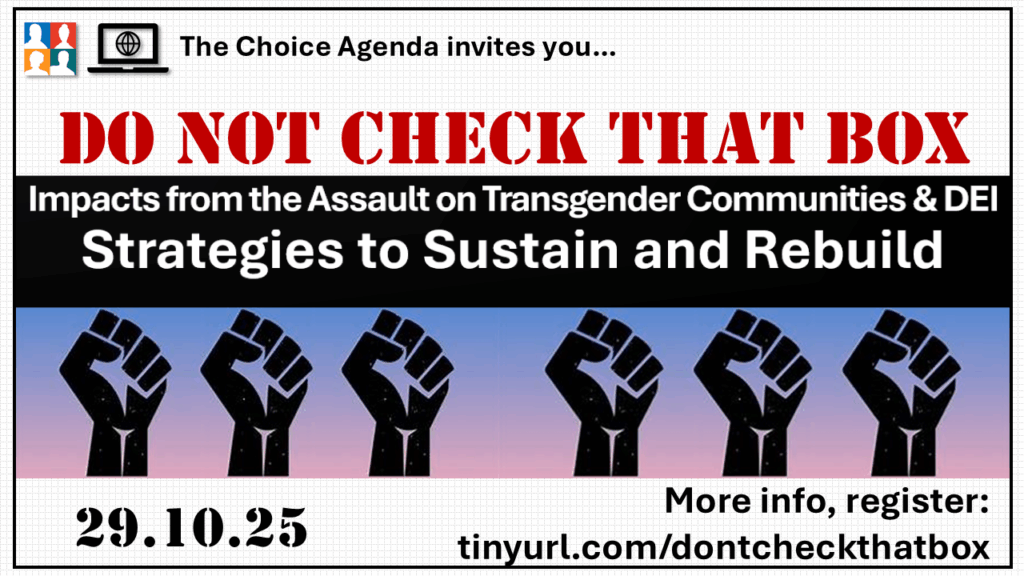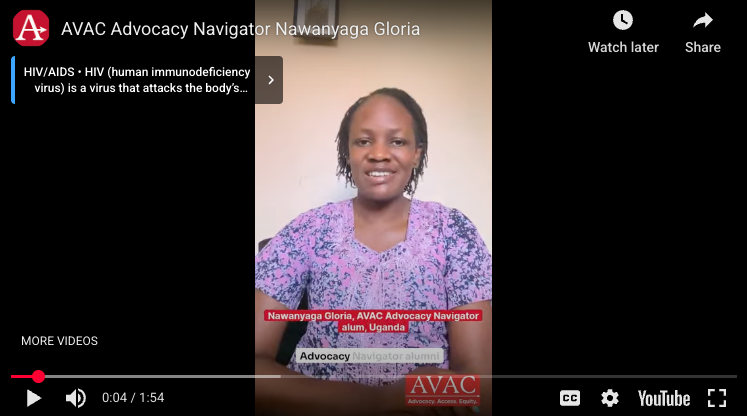By Bridget Jjuuko and Jeanne Baron
Last year, Gloria Nawanyaga decided to do something about the devastating numbers of adolescent girls and young women (AGYW) who acquire HIV in her country, Uganda. At approximately 10,000 new cases of HIV among AGYW each year, it’s an HIV rate that demands urgent attention and better access to prevention. Gloria found the support she needed to take action when she became an AVAC Advocacy Navigator, a program that combined virtual coursework, personalized mentorship, and opportunities to directly apply learning through a community advocacy project over the course of six months.
She developed a plan to reach communities of young women with information about injectable cabotegravir for PrEP. Gloria explains her campaign in this short video. By the end of her project, she’d reached one million people through social media and other outreach, and kicked-off policy discussions with the Uganda AIDS Commission to improve access to new PrEP methods.
The Advocacy Navigator Model
Gloria was one of twelve navigators who developed concrete, on-the-ground, advocacy projects that advanced HIV prevention in ways that are relevant to their communities. A look at the work of the 2024-2025 AVAC’s Advocacy Navigators is testimony to the value of this model of supported mentoring. These stories also demonstrate the essential power of advocacy to make policy, inform communities, improve the HIV response and change lives.
Mentorship has been a cornerstone of the Advocacy Navigator Program, and this approach offers a sustainable model for supporting emerging advocates in the HIV field. This unique, low resource approach to building a new generation of HIV prevention advocates leverages digital learning, volunteer mentors, and community driven initiatives, making it highly cost effective and adaptable across contexts. With minimal resources, this model of structured mentorship strengthened individual advocacy know-how, built confidence, fostered strong networks, and if adopted by others across the field, it will support a future generation of leaders who can innovate, adapt and sustain progress in the HIV response.
“The advocacy navigator program is something I wish I had access to when I started my advocacy journey because it provides guidance, mentorship as well as the practical experience through seed funding. You get the experience of doing a project but with guidance and mentorship,” said Anna Miti a former AVAC Fellow and journalist who now is the co-moderator of of The Choice Agenda listserv.
More Highlights of Advocacy in Action in the Navigator Model
Takunda Clement Chanetsa worked at the grassroots and policy-level in Zimbabwe to address stigma and mental health needs among young people living with HIV. He ran focus groups, developed advocacy toolkits, engaged traditional leaders and government agencies, and ultimately secured concrete commitments to improve youth access to healthcare. “I knew I was making a difference when young people started telling me they felt safe to talk about their challenges for the first time. I saw them transform and become advocates. Now I am going to fight for policies that include mental health services in HIV care. Never underestimate the power of youth advocates.”
Madalitso Juwayeyi’s university student community faced barriers to access to PrEP, and Malawi’s existing strategic planning for HIV prevention made no unique provisions for university students. Her project created platforms for student advocates, clinic personnel and National AIDS Commission policymakers to meet and learn from each other, resulting in agreements to develop strategies for PrEP distribution to Malawi’s university students. “This is a proof that when young people are given a chance to demand what they want then change comes.”
Joseph Linda saw that vast areas of Kampala, Uganda, were home to youth who needed HIV services but with few pathways to find them. He created an accessible database of HIV providers that for the first time connected vulnerable communities to landscape of care. He trained a cadre peer educators to raise awareness of life-saving options in HIV treatment and prevention and where to find them. “The problem I saw was the young people in the slum areas had no direct access or information about where to get HIV prevention. My long-time goal is that young people know about HIV services and can find them.”
Other highlights from Navigator projects include:
- Jessica Booysen created comprehensive workshops on reproductive health and rights in her South African community.
- Gcebile Yvette Dlamini worked in Eswatini to educate community leaders and youth, particularly young women, about HIV prevention.
- Renny Mulala deployed a multi-media campaign in Zambia, including print and radio, to reach youth and dispel myths about long-acting injectable cabotegravir as PrEP, promoting access and informed choice.
- Rumbidzai Munhanzi of Zimbabwe and Sharon Ramantele of Botswana championed the equity and health challenges faced by people who use or inject drugs (PWID).
- Nicole Ondisa Oduya’s advocacy reshaped access to PrEP among sex workers in her Kenya community.
- Elizabeth Zahabu’s project in Tanzania introduced sexually transmitted infection (STI) self-testing kits, trained a cadre of peer educators, and engaged government leaders who became allies in supporting reproductive rights, and ultimately achieving increased funding for local clinics.
Mentoring Future Leaders: Next Generation Advocacy for Equity and Impact in HIV prevention
Civil society and advocacy organizations can adapt and implement the Advocacy Navigator model to fit their context. This model is designed to be flexible and respond to opportunities in a given community rather than a rigid curriculum. Virtual training, mentorship, and local advocacy projects are core components which can be easily tailored to different contexts, populations, and priorities to address specific health or social issues beyond HIV prevention.
Mentorship can also be aligned with local expertise and deliver sessions in local languages or through accessible digital platforms such as WhatsApp or Zoom. The model allows for variation in project scope depending on available resources, ranging from small grassroots initiatives to national advocacy campaigns. Because it relies on partnerships, peer learning, and virtual engagement, it can be implemented in both urban and rural settings with minimal cost while maintaining high impact.
“The model demonstrates that meaningful advocacy can thrive through mentorship, collaboration, and locally driven action, even in resource-limited settings. It’s simple but incredibly effective. The model gives mentors and advocates the confidence and structure to make real change where it matters most,” said Cleopatra Makura, Pangaea Zimbabwe.
“The Advocacy Navigator program model is inspirational. It empowers individuals to advocate for themselves and others, creating a ripple effect of positive change. Its effectiveness lies in its tailored approach, building confidence and skills, while being low-resource due to its adaptable, peer-led, and community-based design,” said Eric Mcheka of Edukans Country Office in Malawi.
“It’s a transformative process with impact though executed in few months,” said Chilufya Hampongo, Ascend Futures Foundation.
The range and depth of the work of these young leaders is an inspiration and an opportunity. In the current environment, where investment in HIV prevention has constricted, the Advocacy Navigator model provides a dynamic, effective way forward for advocacy that is needed now more than ever.








